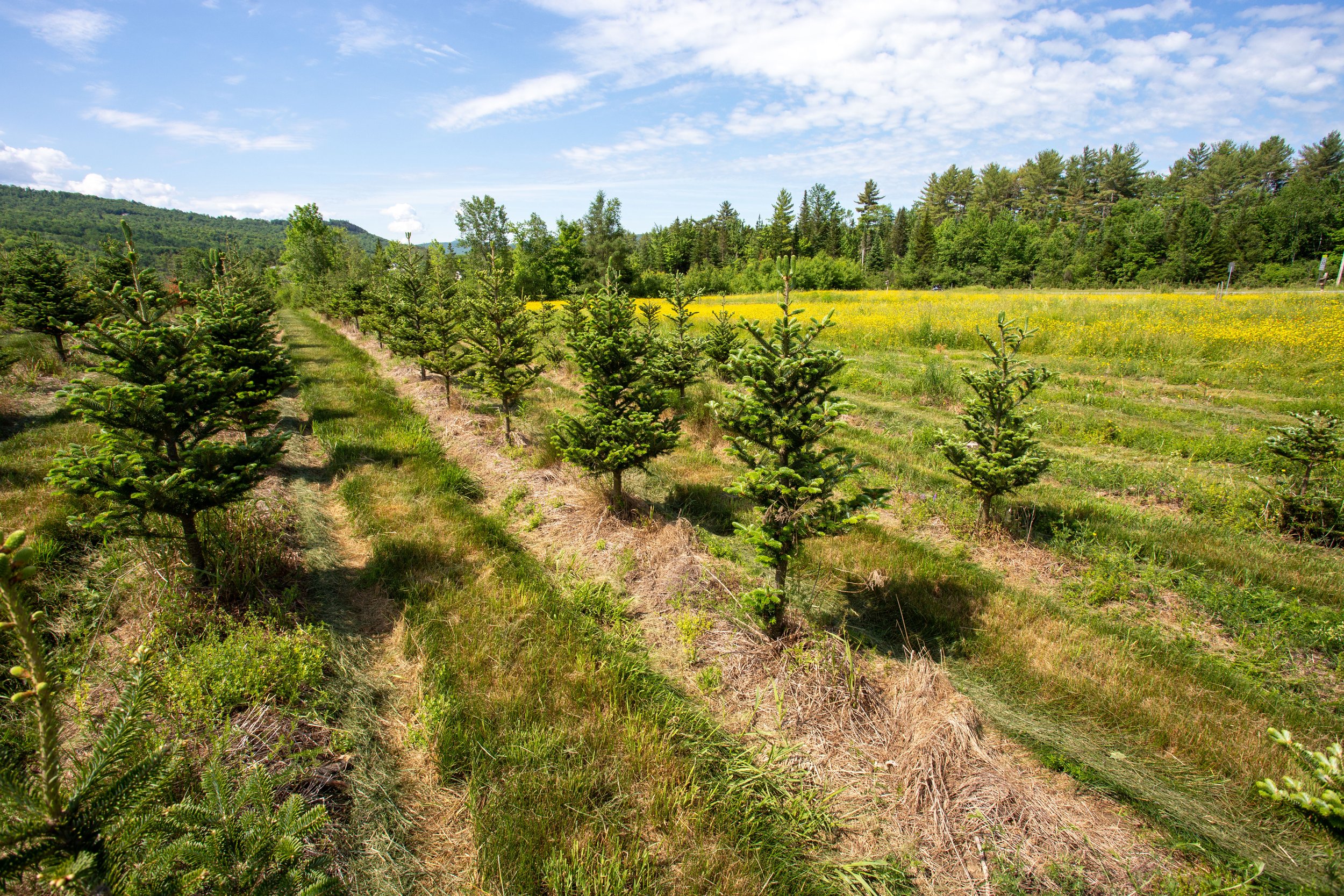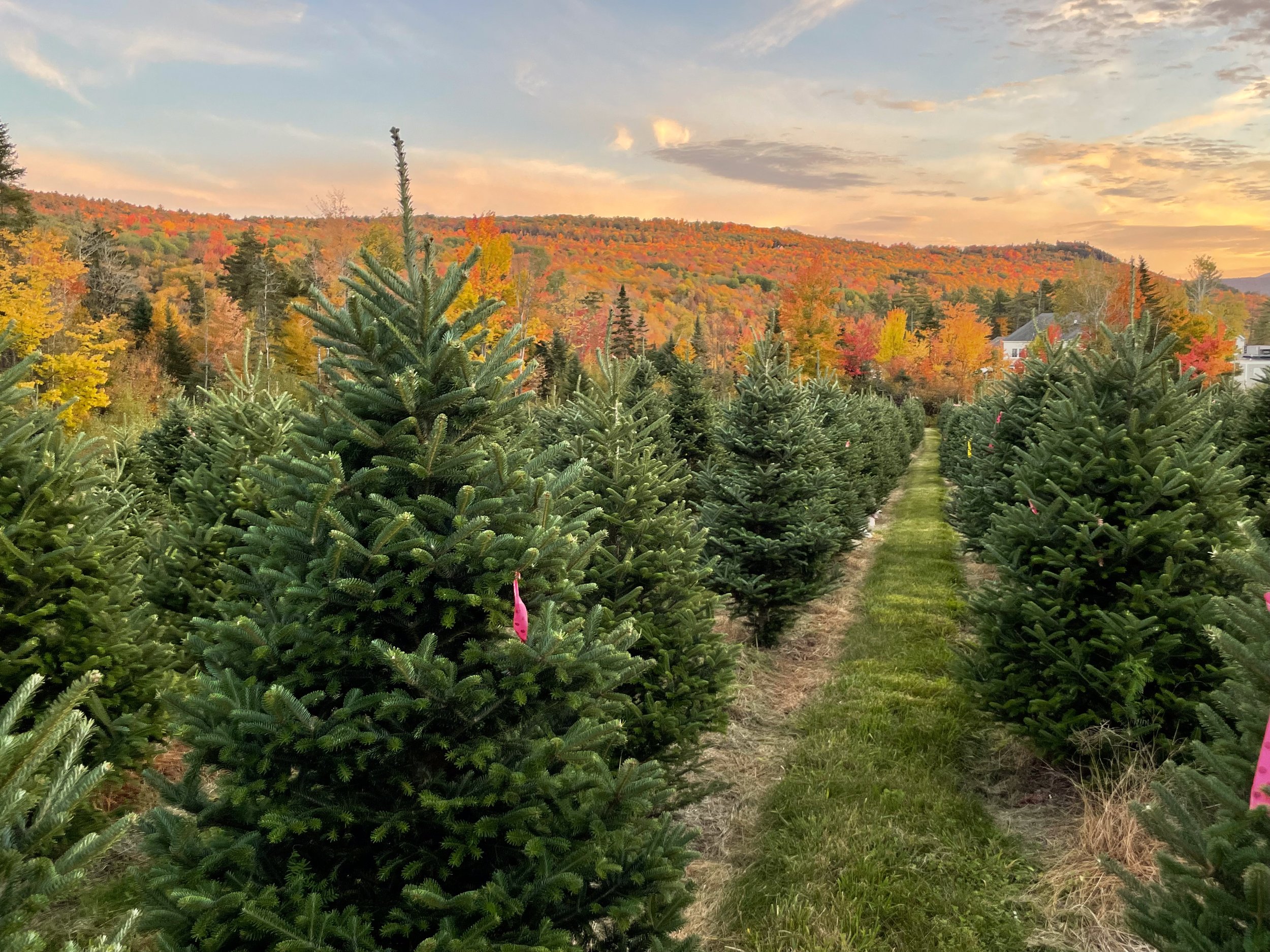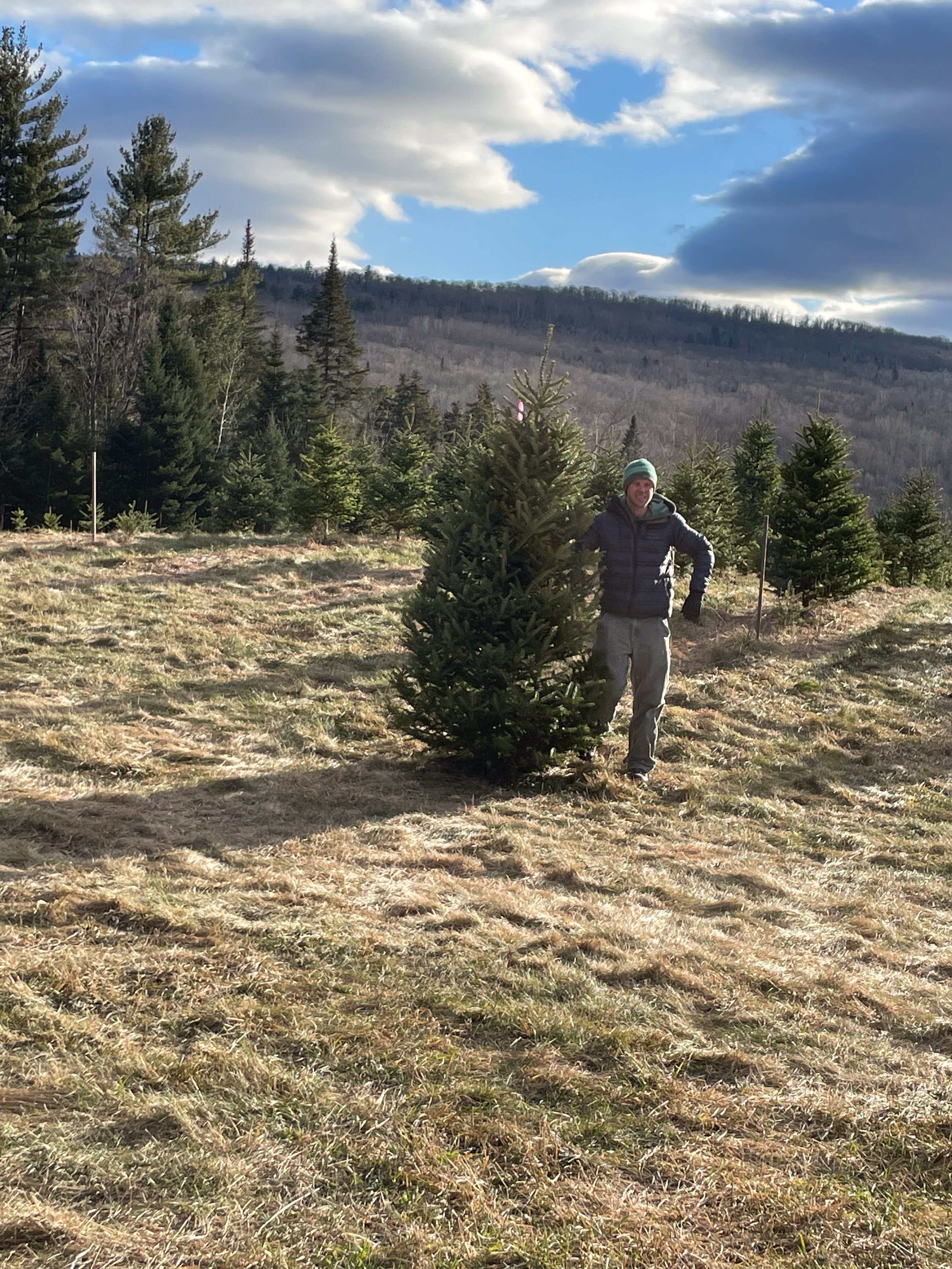
Cut-Your-Own Christmas Trees
Open to the public for CYO from 9 AM - 3:30 PM the last weekend in November (including Friday) and the first two weekends in December unless sold out before.
Weekday sales are by appointment only.
There are several tree species grown on the farm, each one hand planted on a family and friends planting day and then carefully looked after by Nigel and the family to create the perfect tree for your holiday celebrations.
Nigel is experimenting with several different tree species Fraser Fir, Canaan Fir (a type of Balsam Fir), Korean Fir, Korean/Balsam cross and Fralsam (Fraser/Balsam cross).
In his semi-retirement Nigel is experimenting with several different ways to grow trees and also several different tree species.
-
Korean x Balsam Fir
A hybrid cross between the Balsam and Korean Firs. It possesses the great characteristics of the Korean Fir - excellent needle retention, a pleasant citrus smell, and the "white flash" of its needles - and by crossing it with the Balsam it also has a straighter leader and is overall a fuller tree. Available from 2025.
-
Canaan Fir
A type of Balsam Fir that is a native of the Canaan valley in Virginia. A beautiful tree that is full and smells like the traditional New England Balsam Christmas tree. Good needle retention and classic wonderful scent in the house. Available from 2023.
-
Fraser Fir
Hails from North Carolina but grows well in the NH hills. Named for the botanist from Scotland called John Fraser who discovered the species, it has a beautiful blue color with strong branches and a pleasant scent.
-
Korean Fir
Grows naturally in the higher mountains of South Korea including Jeju island. It has lovely blue green needles with a silver underside, making for an incredibly beautiful tree to have in your home. Limited quantity available in 2023.
-
Balsam Fir
A native of the New Hampshire forests. It has a pleasant odor often described as the scent of the New England Christmas. Balsam Fir have a range of colors from blue to dark green depending on the seed source. On South Farm “wild balsam” self seed in some of the cultivated rows of trees. Some of these “wildlings” are then pulled and planted.












